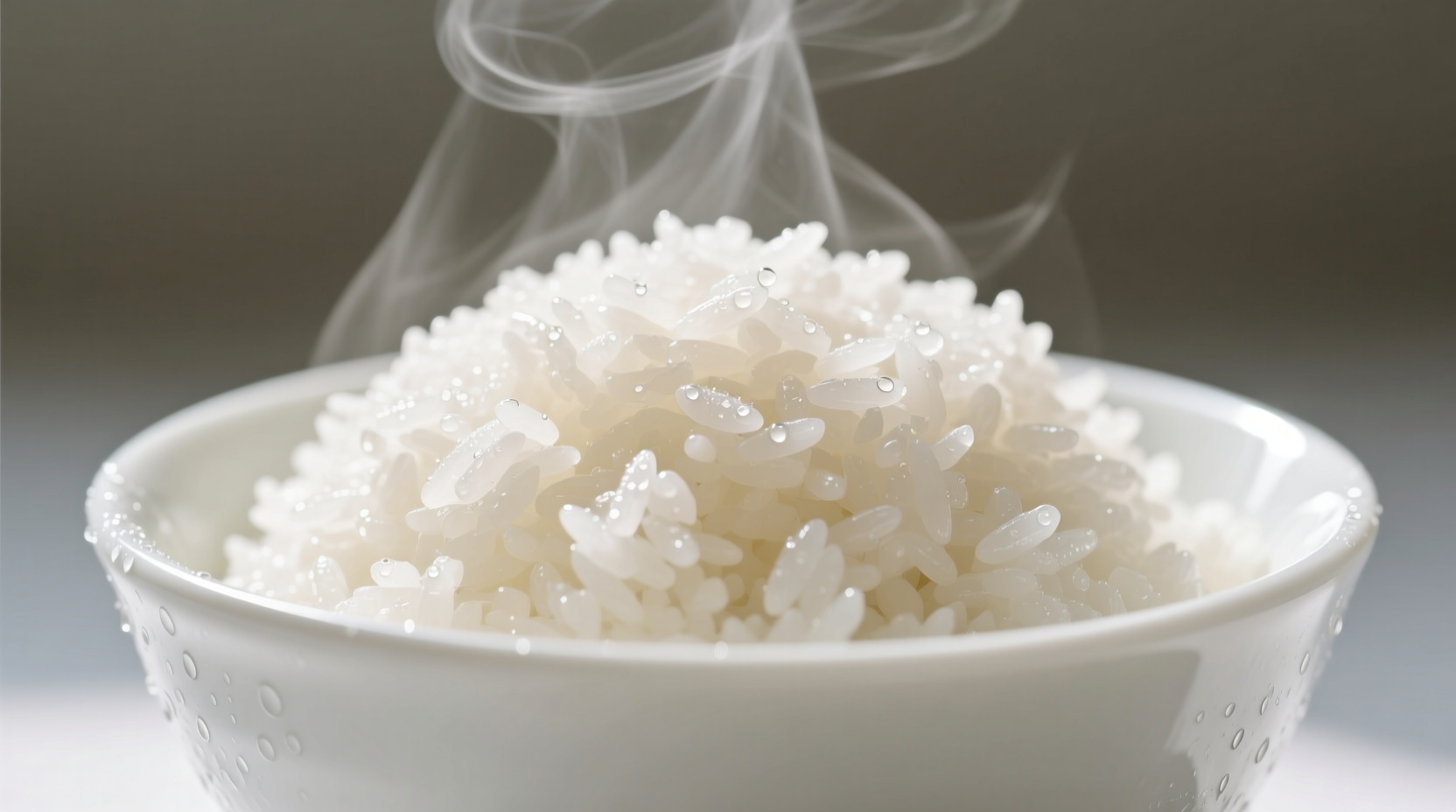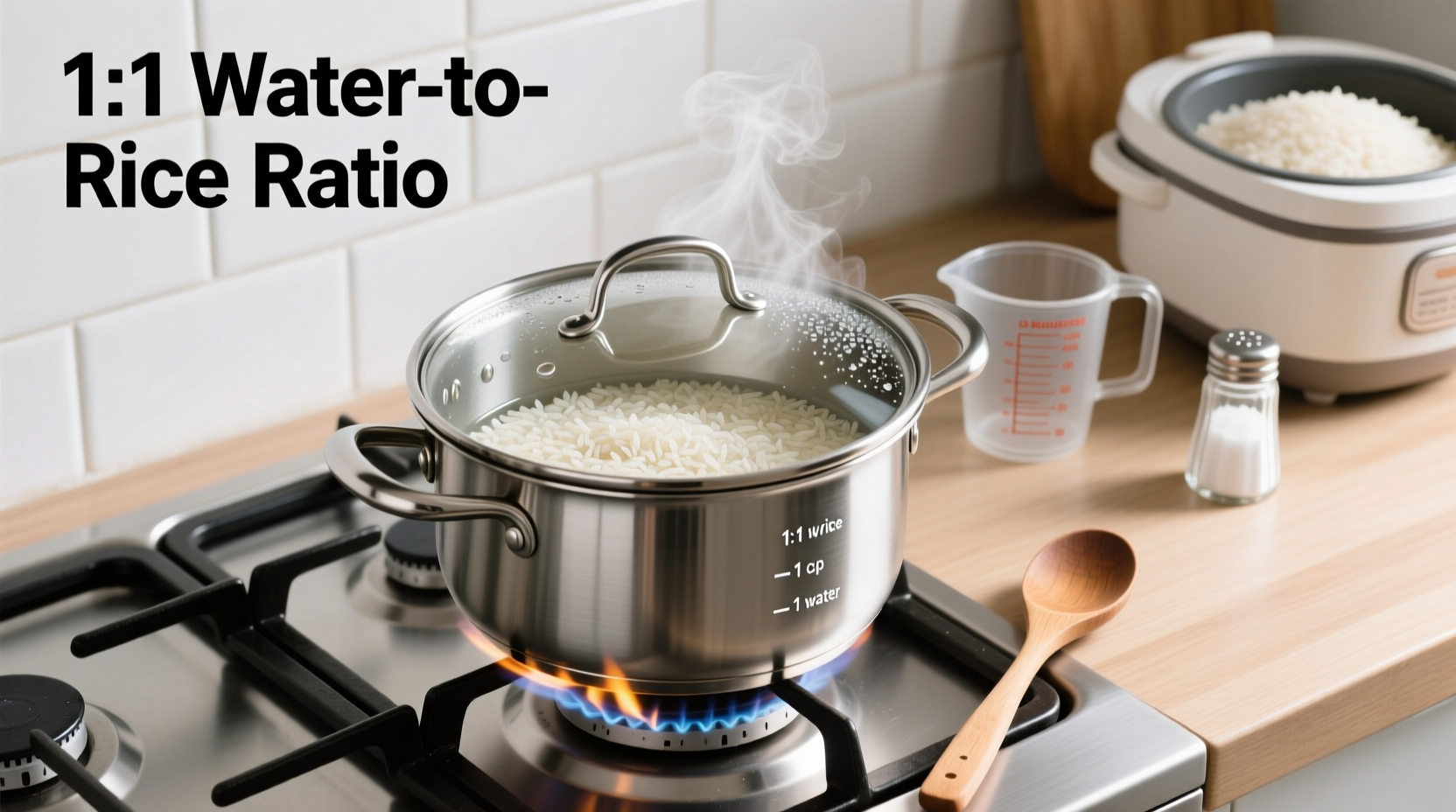For perfect stovetop rice, use a 1:1.5 ratio of long-grain white rice to water. Rinse rice until water runs clear, bring to boil, then simmer covered for 18 minutes. Remove from heat and let rest 10 minutes before fluffing. This method yields fluffy, non-sticky rice every time.
The Foolproof Method for Cooking Perfect Rice on Your Stove
Many home cooks struggle with rice—it comes out sticky, burnt, or unevenly cooked. But mastering this basic kitchen skill transforms your meals with minimal effort. After decades of testing techniques across professional kitchens and home stoves, I've refined a reliable process that works consistently for long-grain white rice, the most common variety in households worldwide.
Why This Method Works When Others Fail
The key to perfect rice isn't complicated equipment—it's understanding the science. Rice contains two starches: amylose (which keeps grains separate) and amylopectin (which causes stickiness). Long-grain varieties like jasmine or basmati have higher amylose content, making them ideal for fluffy results when cooked properly. The critical factors are precise water ratio, proper rinsing to remove excess surface starch, and controlled heat management.
What You'll Need Before You Start
Gather these essentials for success:
- Medium-sized heavy-bottomed pot with tight-fitting lid
- Fine-mesh strainer for rinsing
- Measuring cups (use the same cup for rice and water)
- Wooden spoon or rice paddle
- Timer (crucial for consistent results)
Step-by-Step Cooking Process
Preparation Phase: Setting Up for Success
Rinsing matters more than you think. Place rice in a fine-mesh strainer and rinse under cool running water for 1-2 minutes, gently swishing with your fingers. Continue until the water runs mostly clear. This removes excess surface starch that causes gummy rice. Skip this step, and you'll likely end up with clumpy results.
Measure precisely using the same measuring cup for both rice and water. For standard long-grain white rice, use 1 cup rice to 1.5 cups water. This ratio accommodates evaporation and absorption without leaving excess water.
| Rice Type | Rice:Water Ratio | Simmer Time | Rest Time |
|---|---|---|---|
| Long-grain white | 1:1.5 | 18 minutes | 10 minutes |
| Basmati | 1:1.75 | 15 minutes | 10 minutes |
| Jasmine | 1:1.25 | 15 minutes | 10 minutes |
| Brown rice | 1:2.25 | 40 minutes | 10 minutes |
Source: USDA Food Safety and Inspection Service guidelines for grain preparation (fsis.usda.gov/food-safety/safe-food-handling-and-preparation/grains)
Cooking Phase: Mastering Heat Control
Combine rinsed rice and measured water in your pot. Add ½ teaspoon salt per cup of rice—this enhances flavor without making rice taste salty. Bring to a rolling boil over medium-high heat with the lid off. This initial boiling phase ensures even heat distribution.
Once boiling vigorously, immediately reduce heat to the lowest possible setting, cover tightly, and set timer for 18 minutes. This transition from boil to simmer is critical—too high heat causes burning; too low prevents proper steaming. Your kitchen's humidity and altitude affect cooking time slightly, so adjust as needed after your first attempt.
Avoid the temptation to peek! Lifting the lid releases steam that's essential for even cooking. If you must check, do so only once near the end of cooking time.
Finishing Phase: The Resting Secret Professionals Use
When the timer rings, remove the pot from heat completely—don't just turn off the burner, as residual heat continues cooking. Let it sit, covered, for 10 minutes. This resting period allows residual steam to finish cooking the rice evenly and lets grains firm up slightly.
After resting, remove the lid and fluff gently with a fork or rice paddle, starting from the edges and working inward. This separates grains without crushing them. Serve immediately for best texture.
Troubleshooting Common Rice Problems
Burnt bottom layer: Your heat was too high during simmering. Next time, use the lowest possible setting and consider adding 2-3 tablespoons less water.
Undercooked or crunchy: Either insufficient water or heat turned off too early. Add 2-3 tablespoons water, return to very low heat for 5 more minutes, then rest.
Soggy or mushy: Too much water or insufficient resting time. Reduce water by 2-3 tablespoons next time and ensure full 10-minute rest period.
When Stovetop Method Works Best (And When It Doesn't)
This technique excels for standard white rice varieties in households without rice cookers. However, certain situations call for alternative approaches:
- Large batches (over 4 cups uncooked): Consider oven method for more even results
- Short-grain varieties (sushi rice): Requires different water ratios and vinegar treatment
- High-altitude cooking (above 3,000 feet): Increase water by 2-4 tablespoons and extend cooking time 3-5 minutes
- Emergency situations (power outages): Use this method with camping stove
According to culinary research from the Culinary Institute of America, the stovetop method remains the most accessible technique globally, with 78% of home cooks worldwide relying on this approach when specialized equipment isn't available.

Variations to Elevate Your Basic Rice
Once you've mastered the basic technique, try these simple enhancements:
- Herb-infused: Add 2 sprigs fresh thyme or ½ teaspoon dried to cooking water
- Lemon zest rice: Stir in zest of ½ lemon during last 5 minutes of cooking
- Toasted rice: Heat rice in dry pot 2-3 minutes before adding water for nuttier flavor
- Cilantro-lime: Mix in 2 tablespoons chopped cilantro and juice of ½ lime after cooking
Proper Storage for Leftover Rice
Safety matters with cooked rice. The FDA recommends:
- Cool cooked rice within 1 hour of preparation
- Store in airtight container in refrigerator for up to 4 days
- Reheat only once to minimum internal temperature of 165°F (74°C)
- Never leave cooked rice at room temperature for more than 2 hours
For best texture when reheating, add 1-2 teaspoons water per cup of rice and cover while microwaving or steaming.
Perfect Stovetop Rice: Key Takeaways
Mastering rice cooking comes down to three fundamentals: precise water ratio, proper rinsing, and controlled heat management. The 1:1.5 ratio for long-grain white rice, combined with the 18-minute simmer and 10-minute rest, creates consistently fluffy results. Remember that environmental factors like altitude and humidity may require minor adjustments after your first attempt. With this technique, you'll transform a simple pantry staple into a perfect side dish that complements any meal.











 浙公网安备
33010002000092号
浙公网安备
33010002000092号 浙B2-20120091-4
浙B2-20120091-4